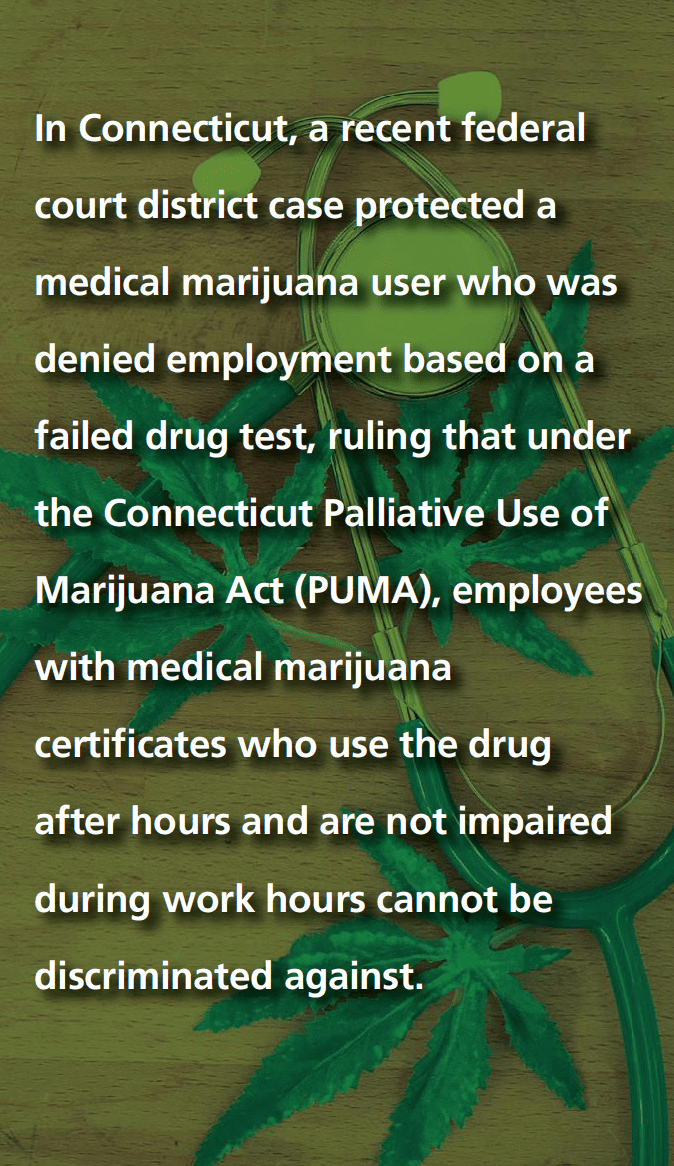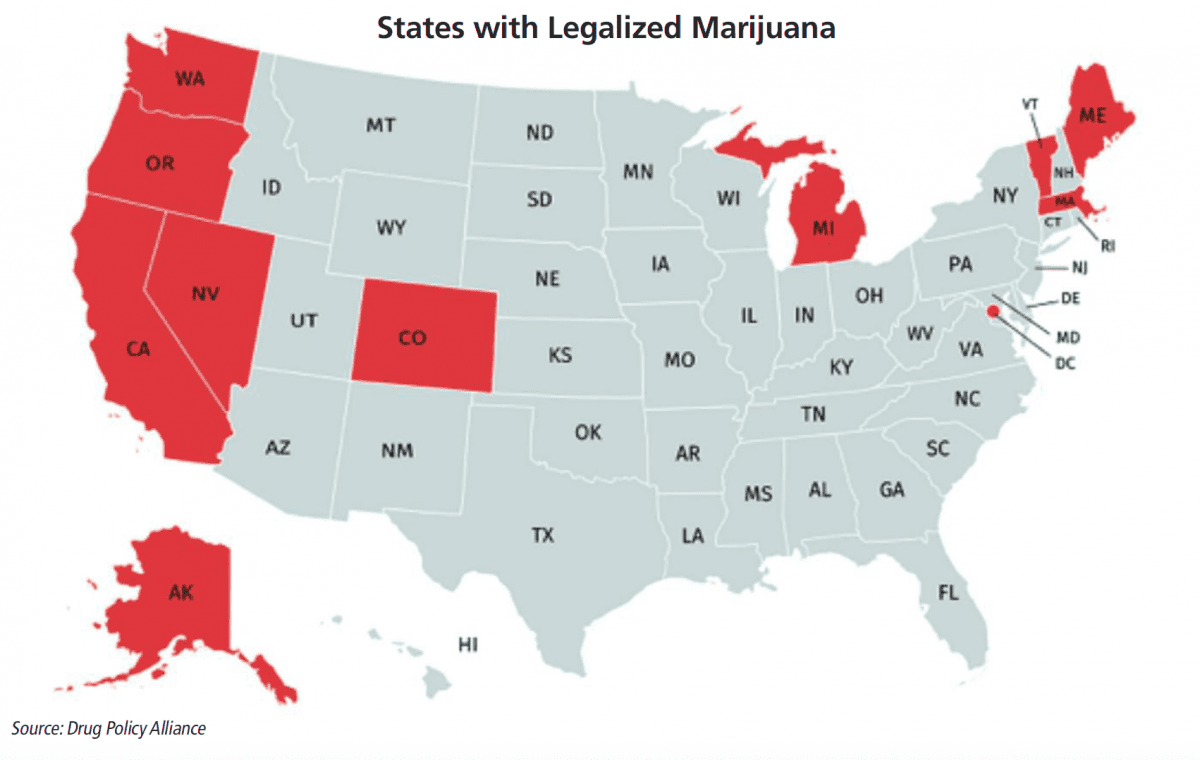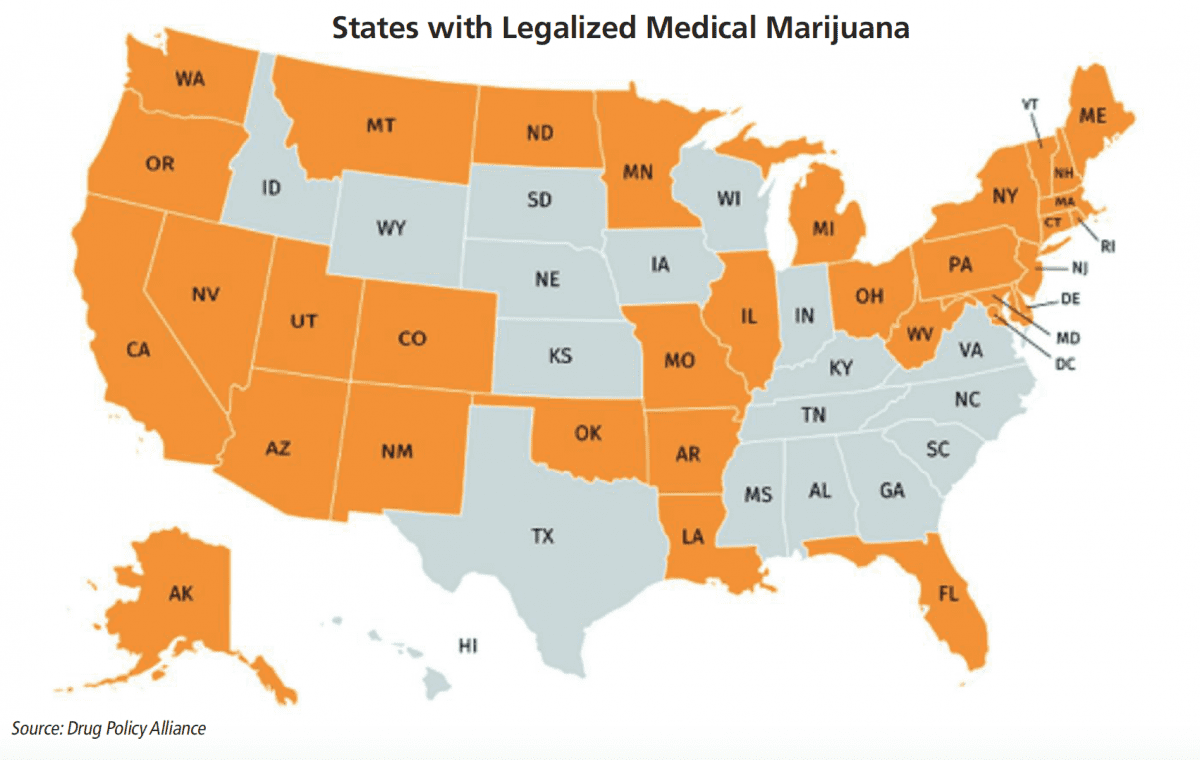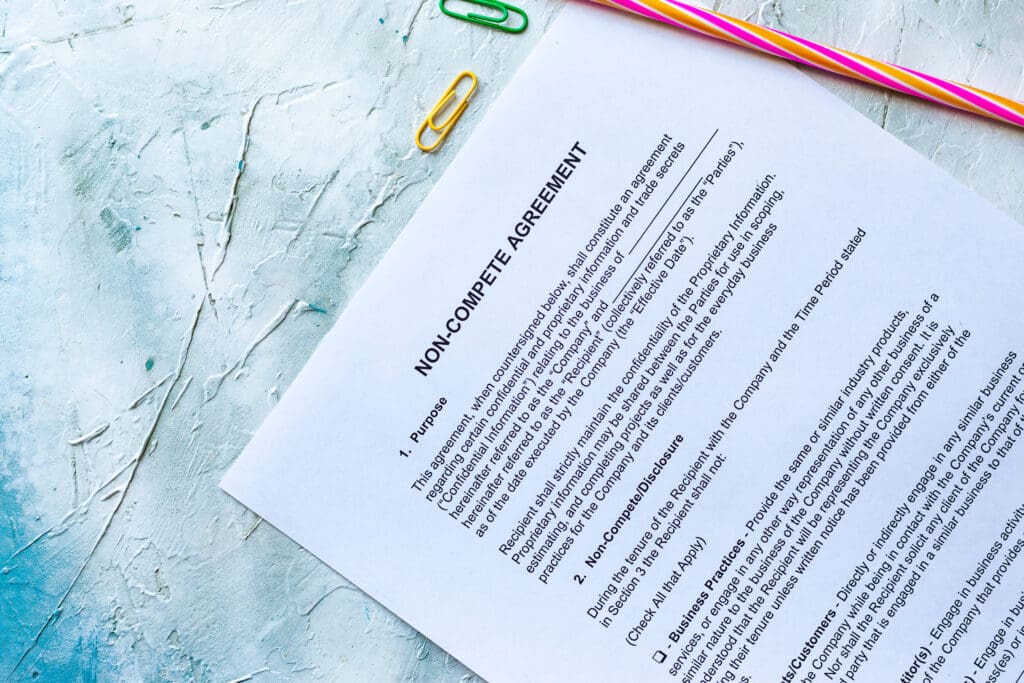Experts offer strategies to help navigate the complex landscape of marijuana legalization and workforce safety.
By Marta Chmielowicz
There is more public support for marijuana law reform than ever before, with Pew Research Center reporting that 62 percent of Americans are in favor of marijuana legalization. And the legislative landscape is constantly changing -33 states have legalized medical marijuana and 10 states, along with Washington D.C., have legalized its recreational use. But it is still classified as a Schedule I drug, or a substance with high potential for abuse and no currently accepted medical use, under federal law. This contradictory legislation is creating a conundrum for organizations that have embraced strict drug-free workplace policies.
“Although marijuana remains illegal under federal law, employers must take care to follow state medical marijuana accommodation, disability accommodation, and anti-discrimination requirements,” says Jamie Webb-Akasaka, vice president of legal counsel at OneDigital. “Violation of these laws can lead to back pay, future pay, job reinstatement, and other damages, penalties, and attorneys’ fees.”
According to First Advantage Chief Global Compliance Officer Josephine Kenney, anti-discrimination laws are getting stricter for employers. In Connecticut, a recent federal court district case protected a medical marijuana user who was denied employment based on a failed drug test, ruling that under the Connecticut Palliative Use of Marijuana Act (PUMA), employees with medical marijuana certificates who use the drug after hours and are not impaired during work hours cannot be discriminated against.
But organizations also need to consider that leniency toward legitimate medical marijuana users can jeopardize employee safety, health, and wellness -especially in industries that require intense focus or those that put employees in direct contact with the public. In particular, Marco Piovesan, CEO of InfoMart, says that organizations in safety-sensitive positions, such as those regulated by the federal government, those that provide home-facing services, and those that require alertness and strict adherence to safety procedures, are at highest risk when facing marijuana impairment.
“It’s also interesting to note that the Department of Transportation’s regulations, which most medical review officers use as a baseline, strictly forbids the use of marijuana for any purpose. Additionally, while there are some states that protect the rights of patients who use medical marijuana, employers open themselves up to HIPPA violations if they ask an employee to provide documentation of their cardholder status,” Piovesan adds.
It’s a delicate balance: Organizations simultaneously need to make sure that they are not discriminating against medical marijuana users while complying with safety standards and policies that often reject marijuana use.
Drug Testing Challenges
Another challenge that arises out of medical marijuana legalization is the issue of inadequate drug testing for THC. “Accurate drug testing for marijuana intoxication still seems to be a distant goal,” says Webb-Akasaka. “Generally, marijuana tests can only show recent marijuana use, not whether a person is impaired. Blood and saliva tests can be helpful to show current intoxication immediately following a work-related accident, but still do not show the level of impairment.”
Since medical marijuana users in certain states legally cannot be denied employment unless they are intoxicated at work, it often falls to managers to identify signs of substance use. Kenney says that while making this determination involves a lot of subjectivity, some organizations in Maine are beginning to adopt a new approach to impairment detection. In fact, the Maine Department of Labor offers an expanded reasonable suspicion training course that suggests three courses of action to determine employees’ fitness for duty: drug testing, a reasonable conversation with the employee, and referral to a healthcare professional who can make a more objective judgment.
“This a new way of looking at things,” she explains. “It’s getting away from whether the individual is impaired or not, and towards whether the individual needs further review and further study to determine the need for intervention or support. It’s a more supportive type of approach for the individual.”
Cross-Border Complications
Businesses that operate across state lines face an added challenge. While some have adopted a company-wide policy, other organizations are choosing to tailor their drug screening practices to each state’s specific regulations.
 But opinions about the best approach differ even among the experts. Kenney advocates for an individualized policy that takes into consideration the nuances of each state. “Companies can no longer, in my opinion, safely do one big drug-free workplace policy that encompasses all the nuances of cannabis regulation. The landscape of workplace drug testing has become more complex. Every employer has to face this issue and make some decisions as to what their level of commitment is to a drug-free workplace and how willing the are to do some of the heavy lifting that’s required when you decide you want to continue testing for marijuana.”
But opinions about the best approach differ even among the experts. Kenney advocates for an individualized policy that takes into consideration the nuances of each state. “Companies can no longer, in my opinion, safely do one big drug-free workplace policy that encompasses all the nuances of cannabis regulation. The landscape of workplace drug testing has become more complex. Every employer has to face this issue and make some decisions as to what their level of commitment is to a drug-free workplace and how willing the are to do some of the heavy lifting that’s required when you decide you want to continue testing for marijuana.”
In contrast, since marijuana is illegal at the federal level, Piovesan suggests that organizations maintain a uniform, well-communicated drug-testing procedure across the enterprise that integrates drug screening for all potential candidates and random drug testing for current employees.
A possible compromise may be to develop unique policies based on specific positions, says Webb-Akasaka. “Employers should consider having a consistent policy for certain sensitive positions across all states, taking into consideration areas of potential liability. Additionally, employers must always take care to apply their policies consistently, in a neutral fashion, so as not to discriminate against any protected class.”
Best Practices
An organization’s decision to include or remove marijuana from drug screening panels in the age of legalization is highly individualized and balances a number of factors, including health and safety of employees, legal liability mitigation, and ongoing perspectives about a drug-free workplace.
How can HR professionals ensure that they remain compliant with state laws while being responsible and fair to their employees? First Advantage’s Kenney recommends five best practices:
1. Stay on top of changing regulations. With marijuana legislation evolving at such a quick pace, it is important for organizations to watch state and federal laws carefully, making sure to consult with their legal counsel before taking adverse action or imposing disciplinary consequences against existing employees.
2. Consult legal teams. “It’s really important for an employer to consult with their own legal counsel in the context of their risk tolerance position and their legal risk mitigation strategy,” Kenney explains.
3. Evaluate the specific job functions and requirements. Organizations should craft a drug policy that takes into consideration the function and needs of specific positions. By deciding which positions must be drug-free and which can be a bit more lenient, HR professionals can help get the candidates they need in the door.
4. Provide individualized assessment and reasonable accommodations. Once a company determines which positions can safely accommodate marijuana use, Kenney says that it should consult the Equal Employment Opportunity Commission’s guidance on individualized assessment.
And Webb-Akasaka agrees: “For any applicant or employee who engages in legal medical marijuana use as a treatment for a qualified disability, employers should engage in the interactive process required by the Americans with Disabilities Act and similar state laws. This may include reviewing whether the individual is using medical marijuana or impaired while at work, or is in a safety-sensitive or other legally regulated position. Most importantly, this would require attorney review before taking any action that affects the terms and conditions of the person’s employment.”
5. Communicate the policy. Organizations need a strong communication strategy that clearly enunciates their positions about medical and recreational marijuana, including extracts and oils such as CBD.
















